Welding, painting, assembly, polishing, transportation and more. For more than 50 years, Kawasaki Heavy Industries, Ltd. has been building robots to work in giant auto and semiconductor factories. But now they’re focusing on becoming a fully integrated robotics company. What kind of robot society is coming? What kind of robots will Kawasaki make for the future? We interviewed Noboru Takagi, the head of robot division at Kawasaki Precision Machinery & Robot Company, to find out.
COVID-19 Rapidly Increases Demand for Robots
Demand for robots has skyrocketed around the world since the outbreak of the novel coronavirus. According to a report by the Robotics for Infectious Diseases organization, there are more than 300 instances of robots being used in 45 countries to combat the pandemic by performing tasks like disinfecting public spaces, taking temperatures, enabling remote communication in schools, and performing deliveries as of January 2021. In a world where social distancing is required, there are continuous calls to consider introducing robots – even in fields where robots have never been used before. It can be said that the COVID-19 has triggered experiments around the world to explore the potential of robots.

Will robots be able to enter society at the scale of smartphones and PCs in the near future? Autonomous robots can be dangerous if safety precautions are not followed, so they need to be safe enough to be sold and regarded as merchandise. There are also a myriad of reliability, maintainability, and cost-effectiveness requirements for industrial products that need to be considered before they are commonplace.
“We have the technology cultivated in industrial robots. Now, based on that, we want to go outside the field where industrial robots have been used,” said Noboru Takagi, the head of robot division at Kawasaki Precision Machinery & Robot Company. “That’s what it means to be an integrated robot manufacturer.”
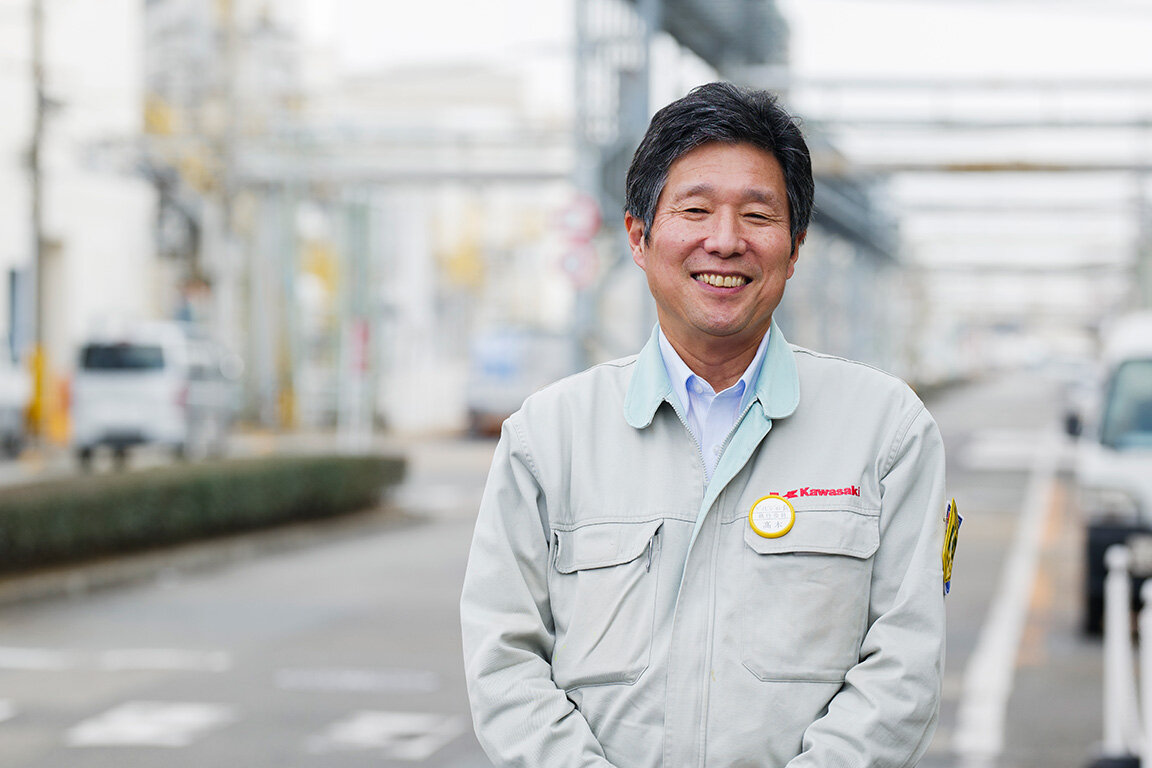
In 2015, Kawasaki Heavy Industries, Ltd. released a dual-arm collaborative robot, duAro, based on a semiconductor wafer handling robot. It created a huge sensation in the sense that humans and robots were able to work together in a similar way. To build on this concept, the company introduced two robot systems in 2017 and 2019: Successor, which reproduces the movements of skilled engineers to pass on their skills, and TRanbo, a self-propelled robot. Furthermore, in 2020, the company obtained permission to manufacture and sell the first surgical assistance robot developed in Japan, the hinotori surgical robot system, in collaboration with Medicaroid (joint venture between Kawasaki and Sysmex). At the same time, Kawasaki began developing a humanoid robot, Kaleido, which is now in its seventh generation. What makes this speed possible is the product development and manufacturing base of industrial robots that Kawasaki has cultivated over many years.
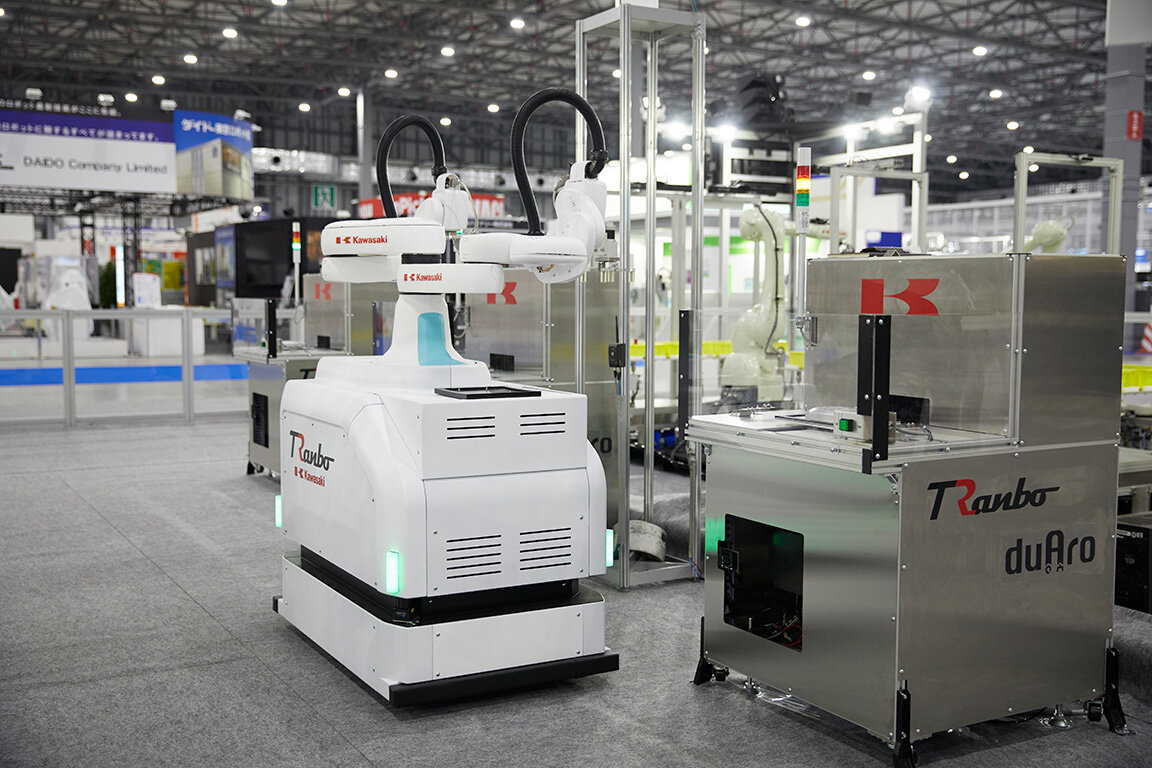
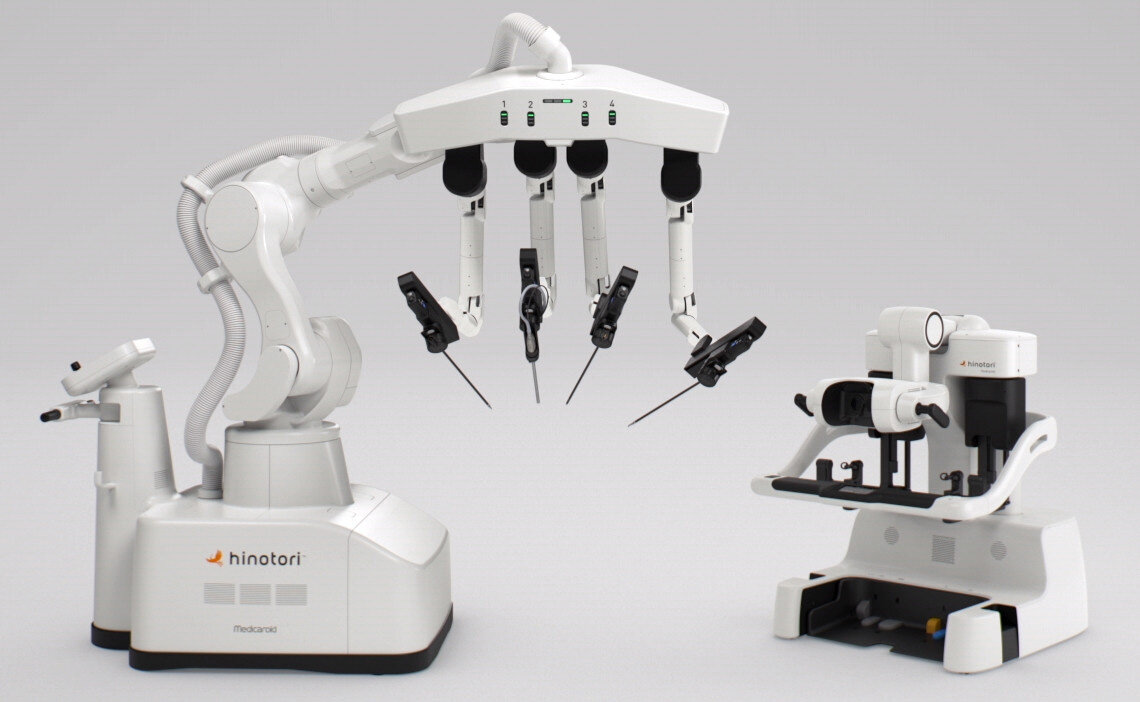
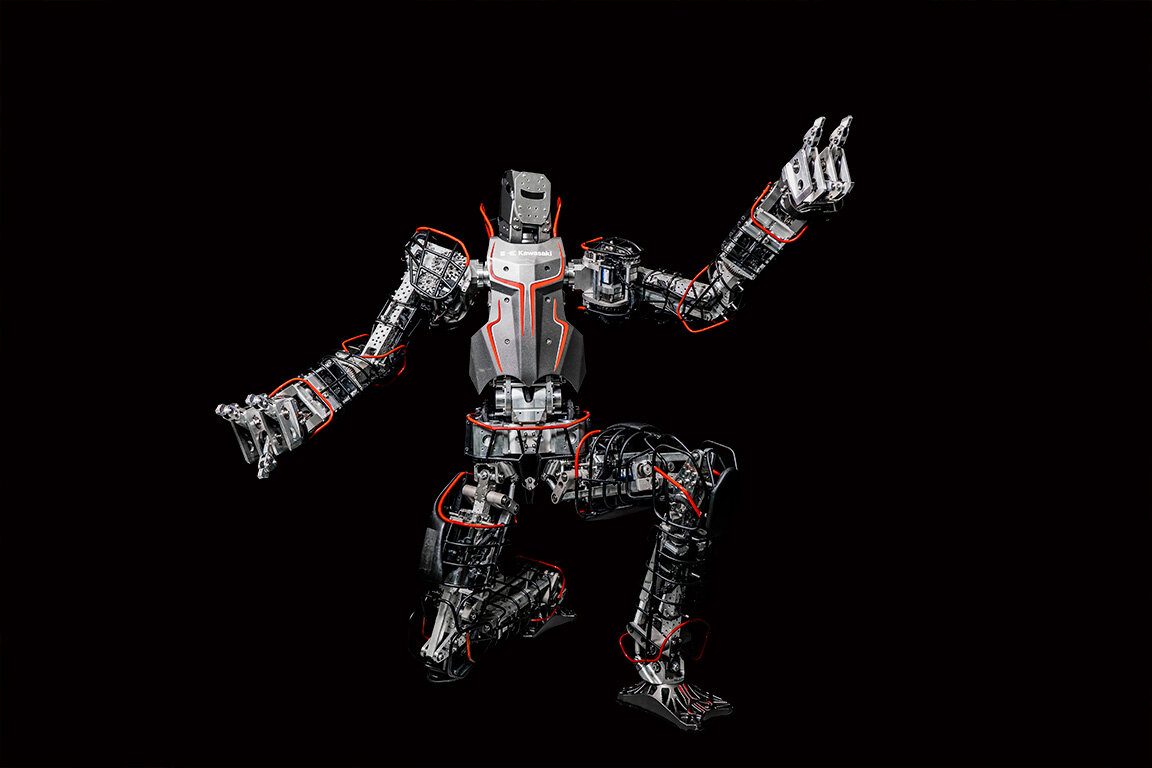
duAro Opens a New Door
“Industrial robots are already widely implemented in large-scale manufacturing plants,” Takagi said. “Therefore, within the framework of conventional industrial robots, every robot manufacturer feels the limits of the market to some extent.” That is why Kawasaki Heavy Industries is trying to expand its own market rather than shrinking within the framework. The trigger was the previously mentioned collaborative robot, duAro.
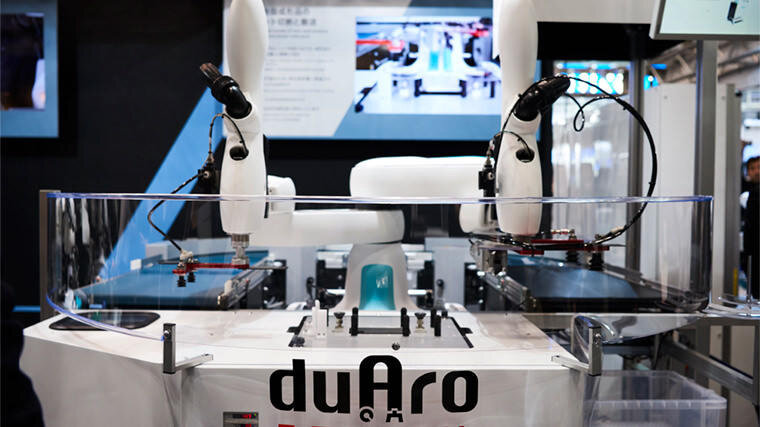
“Customers who have already used a robot, for example, first think about how to move it with a single arm with multiple vertical joints. So when I show them a duAro that can work with two arms, sometimes a new idea comes into being,'” Takagi said.
With traditional arms like vertical and horizontal articulations, cartesian coordinates, and parallel-link robots popping out of the framework of a single industrial robot, duAro has the potential to explore not only areas where robots have been introduced, but also areas where robots have never been considered in the first place.
“In the case of conventional industrial robots, customers already knew about robots. Therefore, we often receive requests such as ‘I want a robot like this that can hold something this heavy,’” Takagi explains. “But we’re trying to bring duAro to users who didn’t know the robot before. So we are making various videos and taking the approach that it can be used in such places, it can also be used with you.”
Robots Should Be With Humans
According to a report done by the International Federation of Robotics (IFR), Singapore had the highest number of industrial robots used per 10,000 manufacturing employees in 2019, followed by South Korea and Japan. However, even Singapore has only 9% of the market, while Japan, which controls about half of the global market for industrial robots, has 4%. So-called robot density is still low, and there are many fields where robotization is viewed as difficult. But is it really difficult to get robots into that space? Is it possible with duAro? Can TRanbo answer your needs? Even if you haven’t seen a robot do it yet, it may be possible. With all of its robotics technology in hand, Kawasaki is entering this unexplored field.
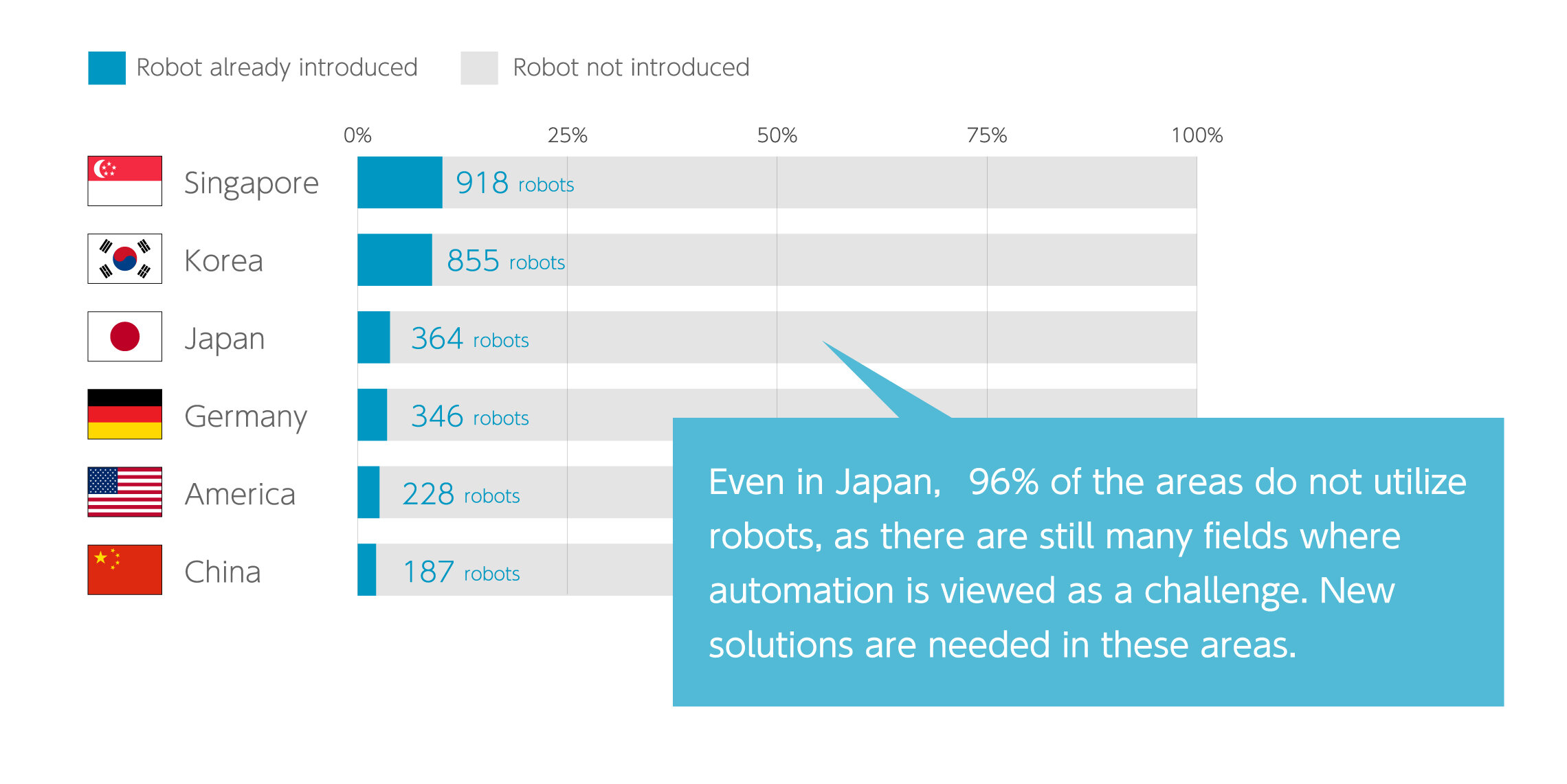
(Source: IFR World Robotics 2019)
“For Kawasaki, which has developed and accumulated robotics technology for more than 50 years since creating the first domestic industrial robot, the foundation to create new robots is more than enough,” Takagi said. “It must be the dialogue within the field that supports the road to becoming a comprehensive robot manufacturer.”
“Attempts to automate existing equipment using only conventional industrial robots are rather challenging. But, for example, when we think about the automation of new facilities on the premise of using robots, I think that robots that are not in the conventional form are better,” Takagi explains.
“It would be easier if we could work with equipment manufacturers to develop equipment and devices that incorporate robots. In addition, after listening to the requests of our customers, such as whether it is good to put a duAro with two arms in here, whether it should be a robot with a slightly thinner arm, whether they want to move the robot arm itself up and down, or whether they want the robot itself to move around, we are thinking that we can make a robot that has never existed before based on the technology we have cultivated.”
Robotic automation will continue to accelerate around the world as a result of a declining workforce, an aging population, a shortened product cycle, a shift to high-mix, low-volume production systems, and a host of social demands to combat infectious diseases. But, in the end, people will never disappear from manufacturing sites.
“There have been many requests for full automation… But as a result, in most cases, the goal of full automation fails,” Takagi said. “Human ability is really great. It can become overly complicated when a robot attempts to automate all works requiring nine robots in work quantity. In that case, nine robots will automate 90%, and humans will handle 10% of the system parts that are difficult to complete with robots. And then, with a simple system, one person can handle the work of nine robots.”
Both duAro, Successor and hinotori were developed on the assumption that they coexist with humans. Kaleido aims to be used in disaster relief and nursing. Kawasaki Heavy Industries, a comprehensive robot maker, has a vision of a future where robots and humans live and work together.
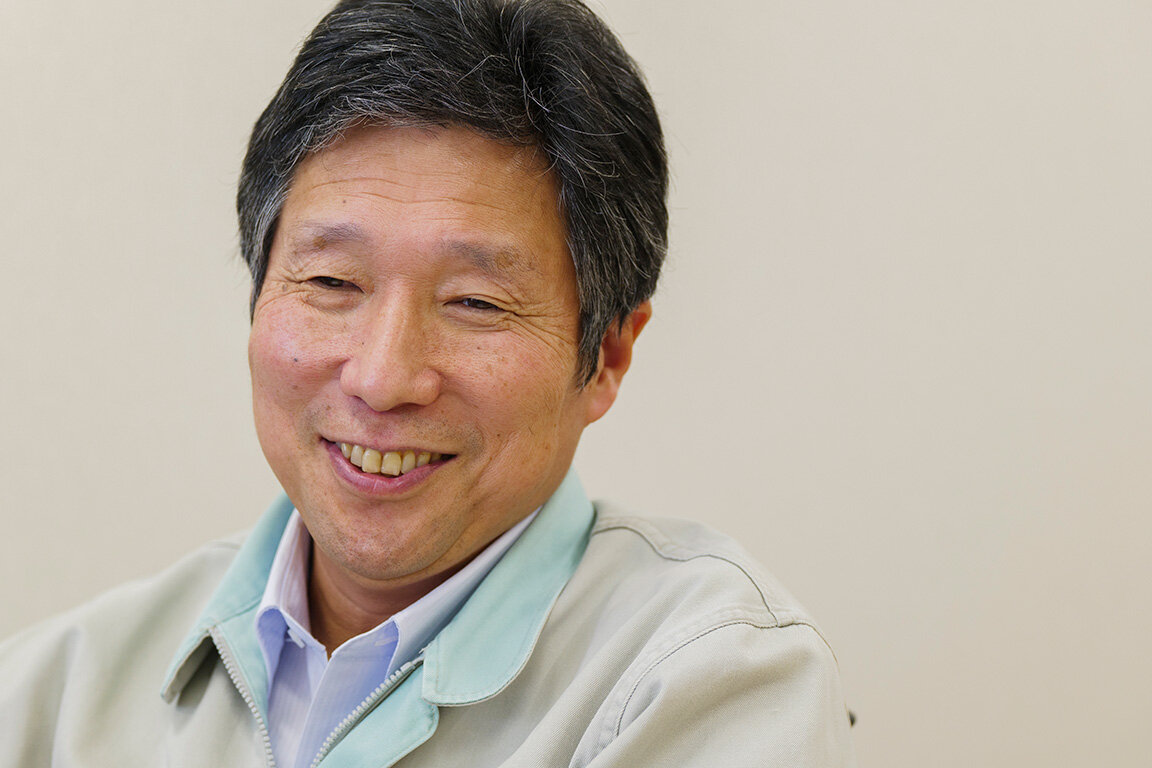
[References]
- Robin R. Murphy, Vignesh B.M. Gandudi, Trisha Amin, Angela Clendenin, Jason Moats: An Analysis of International Use of Robots for COVID-19. CoRR, 2021
- ‘The Future of Artificial Intelligence and the Economy 2030: The Great Collapse of Employment’ by Tomohiro Inoue, Bungei Shunju
- ‘National Geographic Japan Edition’ Nikkei National Geographic , September 2020
- ‘The Great Future of Japan’s First “robotic AI agriculture” Land, GDP and Life Changing Turnely in 2020’ by Shinnosuke KUBOTA, Kodansha